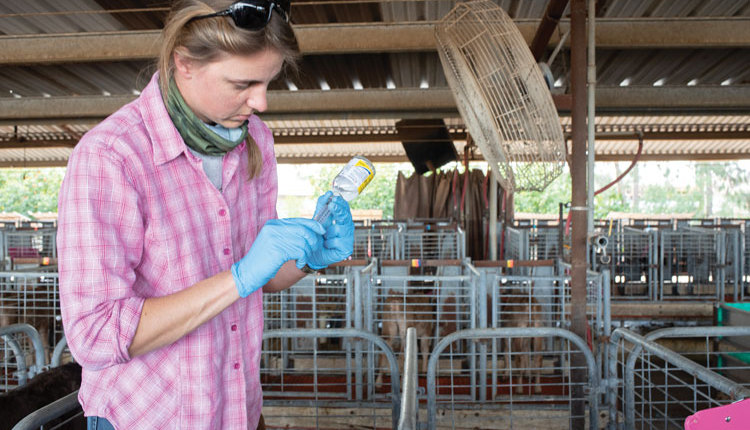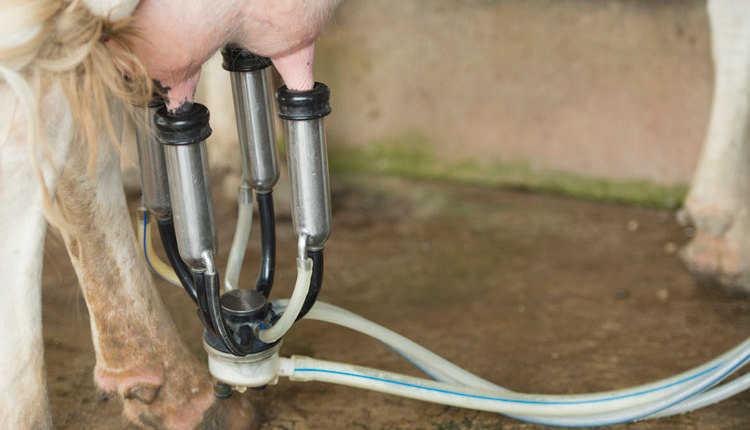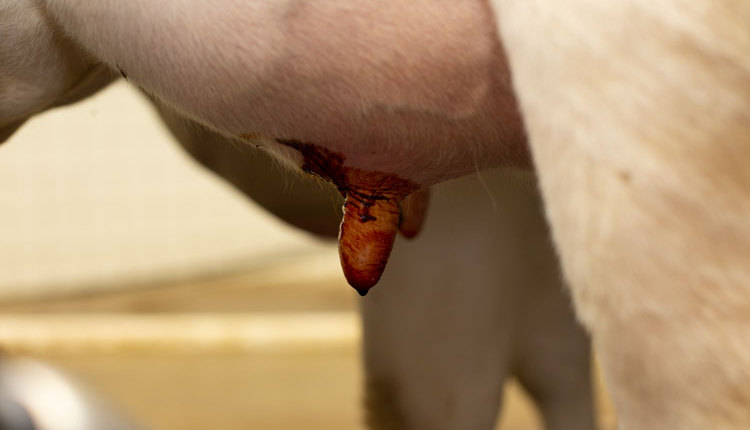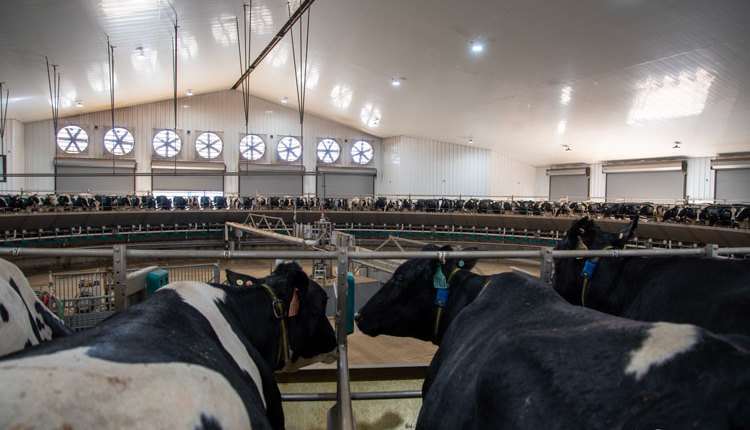The author is a vet who runs UdderWise-Global Mastitis Solutions, United Kingdom. To learn more about the author, visit his website at www.udderwise.co.uk.

When I was about 12, a school friend of mine showed me something revolutionary that his father had been given for his work: one of the first calculators. It was a big piece of equipment, the size of a small brick. We were amazed at what it could do — add, multiply, subtract, and divide at the touch of a button.
Since then, the technological revolution has kept moving forward at an exponential rate. Similar progress has happened with mastitis control and milk quality.
“State-of-the-art” shifts
I was driving to Andrew’s farm when I had to stop as a large digger was blocking the farm entrance so it could knock down the old parlor. I got out of the car and Andrew’s dad, Mark, came over for a chat. We reminisced about milking in the old parlor, which stopped being used about 20 years ago, and how things were then.
This was a double-12 herringbone recorder jar plant with a very narrow pit, giving little space for working. There were loads of narrow bore pipes and narrow entrance and exit doors for cows, making it a dark place to work. The collecting yard was U-shaped, meaning that cows had to be chased into the parlor. It was a hard place to work, and Mark spent many, many years milking there. Still, it was considered a state-of-the-art parlor when it went in.
Every time I tested the parlor the vacuum stability was terrible. The high levels of vacuum fluctuation raised the risk of mastitis. The marginal vacuum reserve and poor pulsation meant a long unit on time.
Beside the parlor was the old freestall barn. The shed had narrow passageways, short freestalls, and poor ventilation, but again, when it was built, it was considered the best design at the time.
The herd’s clinical mastitis level had been 70 cases per 100 cows per year. The herd cell count was between 250,000 and 300,000 cells per milliliter (mL). Many cows got toxic E. coli mastitis shortly after calving, and some cows died from these infections.
Mark knew the parlor and freestalls were no longer fit for purpose, but he held back on changing things until they could finance and build a new dairy on a greenfield site. There was no point in spending money trying to upgrade these old facilities.
A new environment
Mark and Andrew sat down to work out what they wanted for their future dairy. They knew they would have one chance to get things right. They visited a lot of farms and took advice from consultants, and then the first set of plans were drawn up.
I remember sitting down with them as we picked over the details, making sure that there was good cow flow, a lot of feed space, the correct stocking density, freestalls designed so that cows could be kept as clean as possible, and efficient handling facilities. Particular care was taken designing the dry cow and calving cow accommodations, where cows now have plenty of space and are kept very clean.
Two years later, the new dairy was up and running. Cows are now milked through a bright, modern, direct-to-line herringbone parlor with a wide pit. Vacuum stability is excellent, and there is a variable speed vacuum pump to minimize energy use. Automatic cluster removers (ACRs) stop overmilking, which happened in the old parlor as the ACRs cut in at a milk flow of 200 mL per minute and could not be adjusted. Teat end damage was a thing of the past.
Cows are predipped. There are rubber mats on the parlor floor for the milker and mats for the cows, making this a great place for both. Cows love the soft rubber mats throughout the parlor, and this speeds up filling and emptying the parlor. The rubber matting in the pit means that milking is less tiring for the milkers.
Within a year of cows being moved to the new parlor, the herd cell count had been reduced to 150,000 cells per mL. Cows are now milked out quickly and completely.
Mastitis levels started to fall quickly as cows were in a much cleaner environment. The cows, udders, and teats are clean entering the parlor. The freestalls are so comfortable that if you visit the dairy late in the evening, almost every cow is lying down and chewing their cud.
Cows were overstocked in the old barn by about 10%. There are now 5% more freestalls than cows in the new barn. The wide passageways mean less manure splashing onto the beds, resulting in cleaner cows and reduced lameness.
Better approaches
The next game changer was when they started to use internal teat sealant. Mark and Andrew were some of the first farmers in the area to use it, and they were meticulous as to how it was administered. This reduced mastitis cases even further, and a case of E. coli mastitis postcalving is now a rarity.
Andrew had young kids and was concerned about the risk of antibiotic resistance, so he wanted to reduce antibiotic use as much as possible. Clinical mastitis levels had gone down by about 80% following the move and the use of internal teat sealants at dry-off. This reduced antibiotic use, but Andrew wanted to do more and move away from blanket dry cow therapy.
Individual cow cell counts showed that the majority of cows had low cell counts and didn’t have subclinical mastitis at dry-off. So, they moved to selective dry cow therapy in a staged approach. They also wanted to make sure that this change had no adverse effect on the cows. Over time, they changed the thresholds so that fewer cows got antibiotics at dry off. Now, about 20% of cows get antibiotic dry cow therapy. All cows get an internal teat sealant.
Today, the herd somatic cell count runs at 125,000 cells per mL, and the mastitis rate is 15 cases per 100 cows per year. This dairy has really nailed mastitis control and has excellent milk quality.
We are lucky to have excellent knowledge on how mastitis is spread, which allows us to take steps to reduce infections occurring. This is our mastitis technological revolution. Improved teat preparation, the use of internal teat sealants, cowside diagnostics, and modern milking equipment, along with many other developments, means that all herds can now enjoy low levels of mastitis and higher milk quality. This is a winning situation for the cows, farmers, processors, and consumers.











